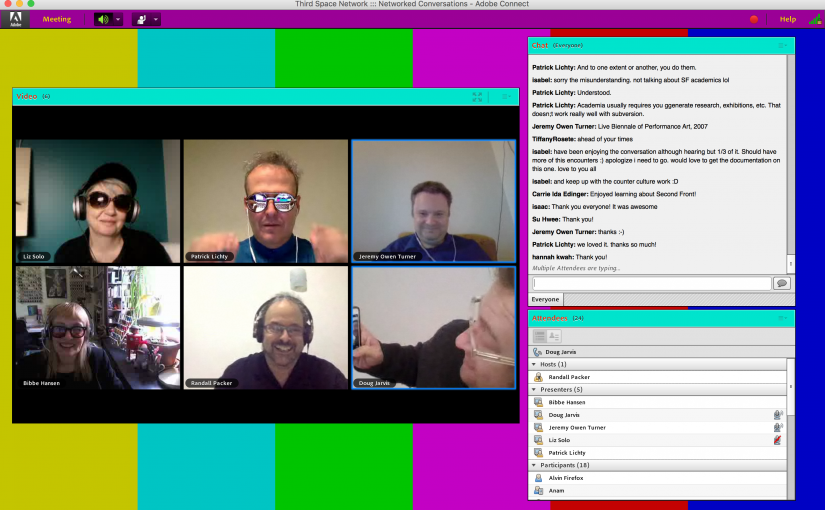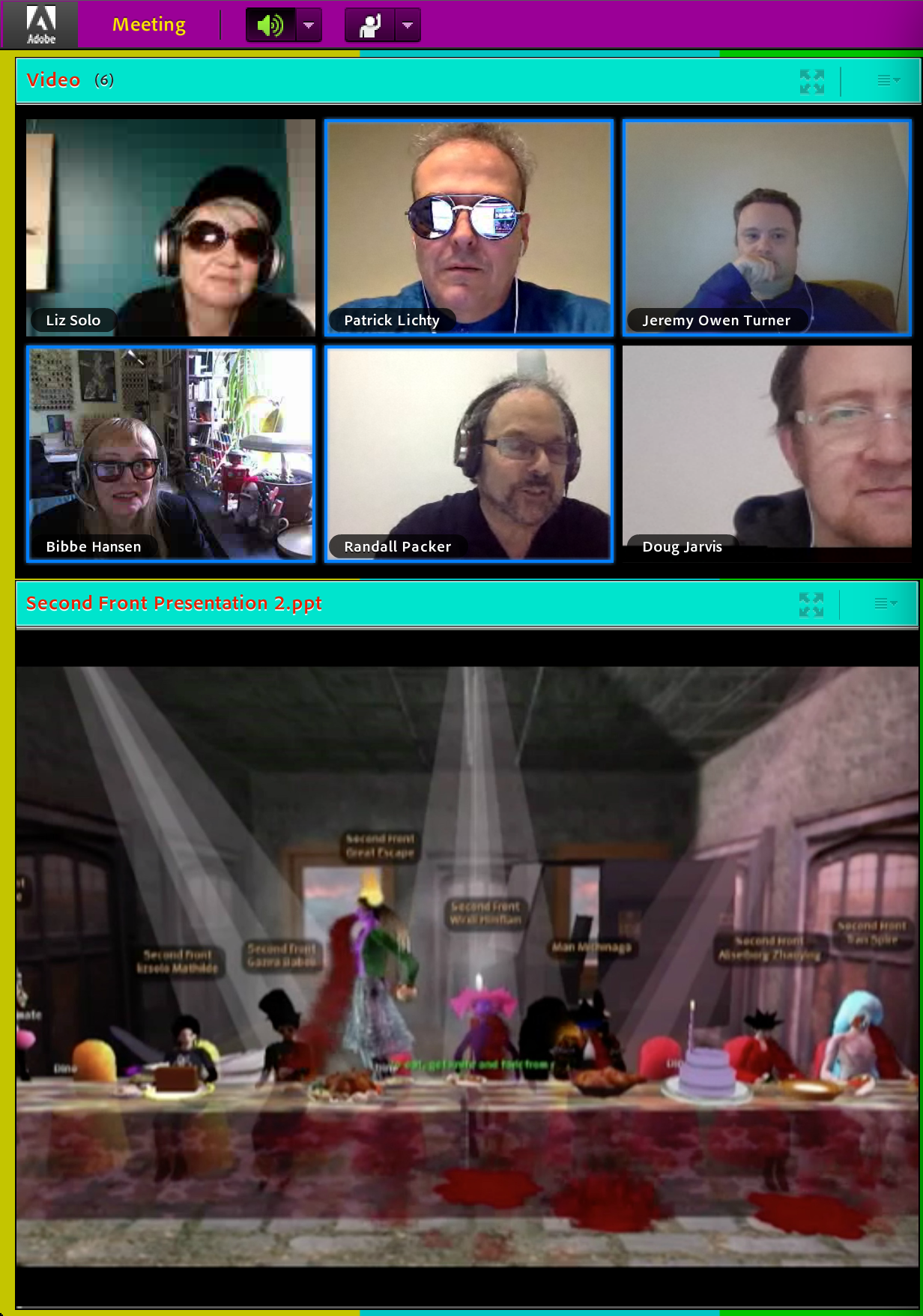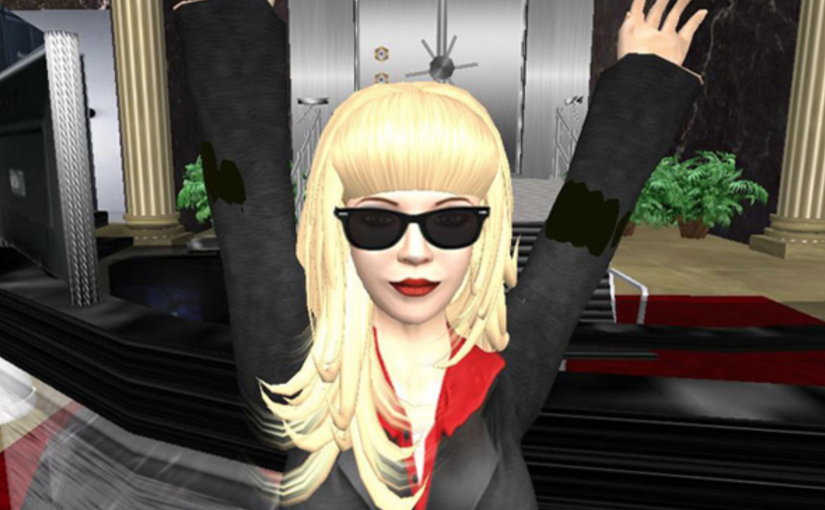11pm, 28th October. I was deciding if I should take a really quick shower before the interview starts or not. 11:01pm, with much itch to shower, I decided not to. And, I am so glad I did not. The interview with Second Front was so rich with passion and energy and just having that spirit to share, the members were unique in their own ways. It ended up with me wanting to hear more from them but the interview had to end and that was that.
The members started off sharing about their avatars and immediately, it amazed me. I mean, it wasn’t anything spectacular. The avatars were essentially alter egos of themselves, what they were free to identify themselves in Second Life. But, it was how they chose to represent themselves that intrigued me. Almost everyone introduced their avatars as something better and more positive rather than something unflattering. Liz was an agent, jeremy was a blue skinned alien Patrick was a cross between Steven Tyler and Andy Warhol. It all seemed to suggest that this virtual “third space” was like a safe haven for many and was offered the most freedom which ultimately sort of bring about a euphoric mood to the members when they are on Second Life.
On what it was like to perform in Second Life
Bibbe mentioned that imagination was the only limiter and what you wanted to be and do, could be accomplished with very low costs as compared to a live performance in a theatre. And this is so true. I think that, as artists, one of the facts that we have to admit is that we are arguably constrained by the big word – FUNDS. of course many do pull through this ordeal and emerge very well established but having being able to do as many things as close to what you had intended to for your art piece, means a lot to the artists.
On “virtual leakage”
When you have unlimited access (to the third space), it will set me lose – Bibbe. She goes on to say that “there is a certain dynamism between emotion and thought wherever you are when you are embodied in pixels”. What Bibbe mentioned was so interesting. I felt that she managed to encapsulate my impression of the third space so well. It felt so relatable. (And by the way, I just wanna say, she’s so cool!) This takes me to my next point on being in the virtual world.
Why does the pieces end up in abomination?
Since the third space (or if you like, Second Life) was free for all to do anything. Naturally, many people would have multiple interpretations as to what this space could be use for. Already when I first logged into Second Life, I see things like Halloween place, Gory places, Sexually suggestive places and all kinds of things that somewhat are socially agreeable by society as something as undesirable if you were to partake in real life. And this leads me to think that Second Life is a space for people to seek a harem of their inner desires. Jeremy mentioned that initially, it wasn’t clear what Second Life was for. And many immediately took this for another regular shoot ’em up site, like an RPG game. And this was one of the reasons to why Second Front decided to perform Grand Theft Avatar as a shooting (robbery) heist.
In conclusion, there were many points mentioned and it would take forever to continue on about it. But my 2 biggest takeaway was –
- It brings out the bad in people don’t believe in and if you are likely to be obsessed in the virtual world, you would be in the real world as well – Bibbe
- We feel things when we are in this spaces and there are (certainly) stakes – Patrick
I guess what I am trying to say is that the existence of the third space may not see detrimental effects. In that, while there could be instances where one may lose consciousness of the real world, really, there is a world of possibilities where you could explore new ideas and break existing laws to create new ones. I mean why would there be the word “possible” if there isn’t any to begin with? I think that this, not only Second Life, allows for the creation of new begins in society and this will develop as cultural norms shift over time. Cheers!










